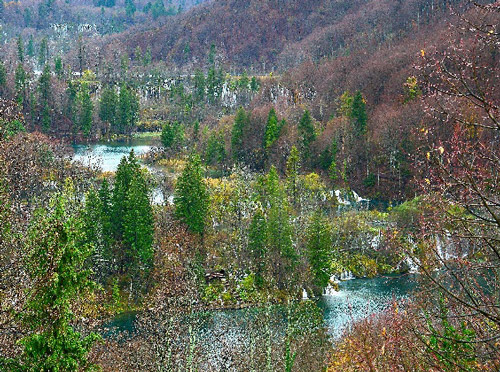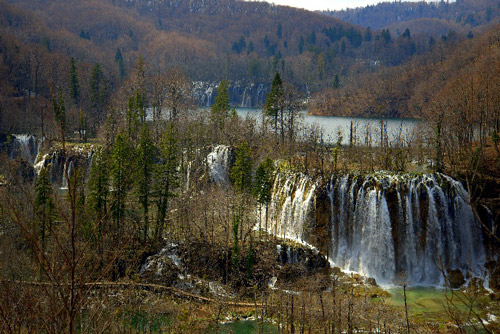Creator of waterfalls and lakes
The process of producing tufa, also called travertine, which in turn forms the tufa barriers and creates the lakes, is part of a unique and universal resource that ultimately led to the proclamation of the Plitvice Lakes as a national park and their inscription on the UNESCO World Heritage List.

Part of the cascade system of the Upper lakes (photo: PLNP archive)
The most prominent surface waters in Plitvice Lakes National Park are the cascading lakes of varying size, formed through the biodynamic process of growing tufa barriers that intersected this former river valley and enabled the creation of lakes. The surface waters take up less than 1% of the territory of the national park, with a total volume of 22.95 million cubic metres of water. As the tufa barriers grow, the water levels rise, increasing the volume of water in the lakes. The 16 larger named lakes, and many other smaller unnamed lakes are separated by these tufa barriers, but are connected in this unique water system via a series of waterfalls between the lakes.

Part of the cascade system of the Upper lakes (photo: PLNP archive)
Even today, the tufa barriers are actively growing, and this biodynamic structure is constantly changing the appearance of the lakes and the waterfalls.

